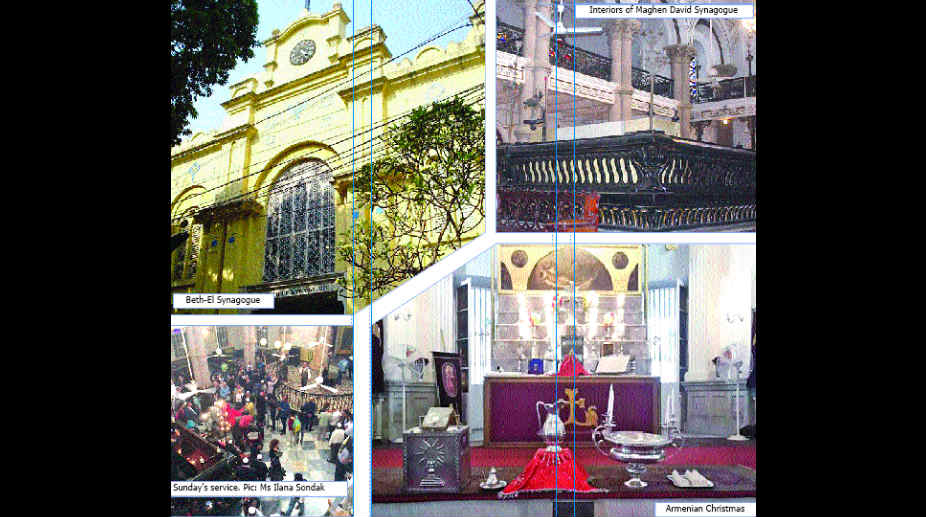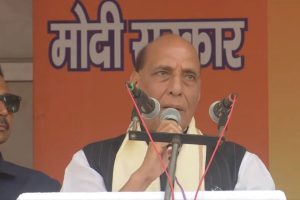No other Indian city, not even Mumbai is as diverse as Kolkata and when scholars and historians look at India which is a mosaic of cultural combinations and ethnic permutations, the conclusions are bound to differ as well as contradict each others’ feelings. “Jerusalem of the East” as it is affectionately referred, Kolkata has been a melting pot of diverse cultures hidden in its lanes and bylanes – be it exquisite synagogues or Chinese temples or fire temples. No less than 16 communities from across the globe have made this city their home making it an area where east indeed met west and transacted business.
In this series of Know Your City, we will endeavour to let Kolkata suffuse your being and hope to protect the rich heritage of the metropolis. Today, we focus on two of the once thriving communities — Armenians and Jews.
Armenians
The Armenians have played a crucial role in Indian history. To evade religious persecution in their own country, Armenians started flocking to India around the time of Emperor Akbar and started settling in areas like Mumbai, Surat, Chinsurah and finally Kolkata, supposedly under the invitation of Job Charnock. They traded mostly in commodities like wool, amber, mirrors and in return they sent out spices, precious stones and cotton from India.Jute trade brought them to Bengal and the late 16th century saw the Armenians work hand in hand with the British to make Calcutta the new commercial hub.
However the community restrained from being just a business community and instead endeavoured to establish their socio cultural identity. Kolkata’s historic Armenian Holy Church of Nazareth was originally built in 1688 and rebuilt on a burial ground in 1724 making it the oldest church of the city. It has undergone several renovations since then including the building of a clock tower.
The oldest marker of Armenian presence in the city is the tomb of Armenian woman Sookia in this church compound in Burrabazar dating to 1630 AD. The church is still superbly maintained and is worth a visit for the strikingly beautiful paintings and frescoes. There are two other Armenian churches in the city – one in Tangra and the other in Park Circus. In the heydays, the thriving Armenian community settled in an area near Free School Street which is even now referred to as Armeni-para. Apart from five Armenian cemeteries in the city, the legacy is carried forward by Armenian College established 1821 which has been instrumental in pioneering rugby in the country.
The main festival of the 300 odd Armenians in the city now is Christmas which is celebrated on 6 January. Armenia being the first country to have adopted Christianity as state religion, believes that nobody is certain of the exact date of Christ’s birth and they prefer to celebrate an Advent Period instead, which culminates in Christmas on January 6.During the service on that day, the crucifix is brought down and used to bless a baptismal font full of water to be used as holy water throughout the year.
Several Armenians have contributed richly to the city, the most notable ones being Arathoon Stephen (builder of Grand Hotel and Stephen Court, Park Street), Sir Paul Chater (noted businessman, knighted by the British) and Gauhar Jaan (the first Indian singer to record music in RPMs, born as Angelina Yeoward). Bengali cuisine has been influenced by Armenian cuisine, the most common example being “Potoler Dolma” which traces its origin to Armenian dish Dolma – mincemeat wrapped in grape leaves.
Jews
‘Nahoums’ — the bakery haven in New Market characterised by its timeless teakwood furniture and smell of freshly baked fruit cakes is one of the last existing citadels of Kolkata’s rich Jewish heritage. Once a thriving community of around 4000, only around 20-30 Jews currently live in the city with the youngest member in his 40s.
The first recorded Jewish immigrant to Kolkata was Shalom Cohen in 1798 from Aleppo (now in Syria). The Baghdadi Jews started to flock to Kolkata during the British Raj and contributed richly to the city’s mercantile development. The community was primarily a business community with leading industrialists like the Ezra family, landlords as well as many who dabbled in medium and small scale businesses.
The chaos following the independence of India and the subsequent creation of Israel led most of the Jews to immigrate to Australia, England and Israel in search of greener pastures. The rapid movement combined with inter-marriages completely destabilised the community in the city. The reduction in headcount has been steady over the years making even conducting a Sabbath with minyan (quorum of minimum of ten Jewish male adults for public worship) not feasible anymore. However despite the strong anti Semitic wave following the World War II, Jews never have felt threatened or faced discrimination in the metropolis.
The city bears quite a few traces of Jewish heritage. The stunning Maghen David Synagogue, a protected monument and recently rededicated by the Jewish Trust, was built in 1884 by Ezra in Italian Renaissance style with brick red finish.
A museum-cum-archive is being constructed at the other important synagogue, Beth-El off Pollock Street.
And then there is the Jewish cemetery in Narkeldanga (complete with a geniza) and several other mansions (Ezra Mansions) and streets that bear Jewish names (Bellilios Street). Some of the notable Jewish citizens include Lt Gen JFR Jacob, best known for the role he played in Bangladesh’s victory in the Liberation War of 1971 and Rachel Cohen (screen name Arati Devi ,the undisputed queen of Bengali silent movies).
The community was highly interested in Western music and contributed both to classical as well as popular music in the 20th century. Ms. JaelSilliman has been tirelessly working by compiling a digital archive to feature documents, photographs and other memorabilia to preserve the memory of the community for posterity.
Although there has been no Jewish student in Jewish Girls School at Park Street since 1975, it continues to provide quality education to neighbourhood girls mostly Muslims. The synagogues are diligently taken care of by generations of Muslim caretakers. Move over Gaza, Palestine and the control of Jerusalem, at a time when the world is being broken up into fragments by narrow domestic walls, —the humble city of Kolkata continues to teach the world lessons of communal harmony and peaceful coexistence. Amen.











